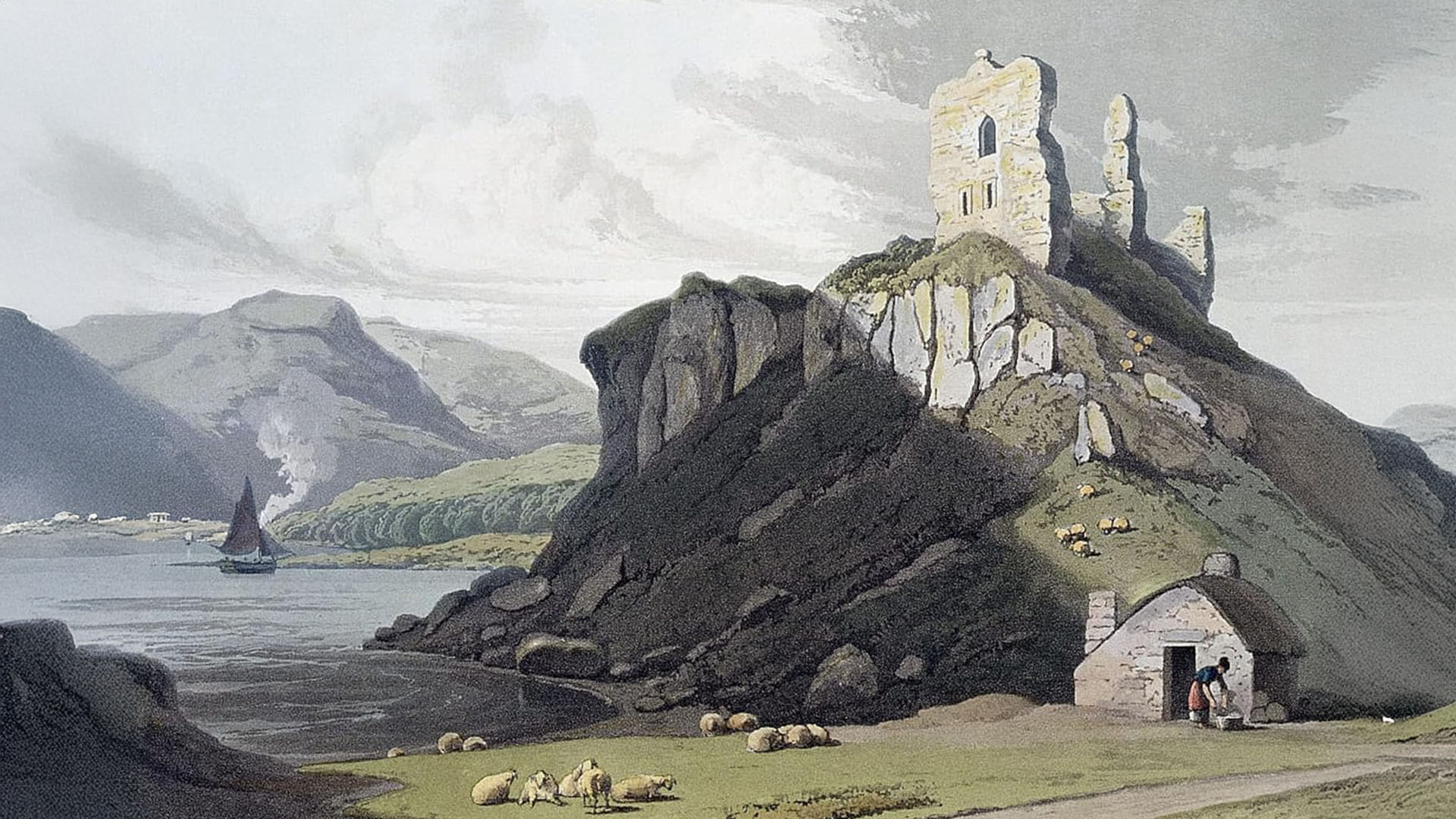
William Daniell – Aros Castle, Isle Of Mull
On a rocky knoll near the village of Salen on the Isle of Mull, you can find the haunting ruins of Aros Castle. More than a dramatic view, these ruins offer a tangible link to a tumultuous past where clans fought for dominance. The 13th-century hall-house, also known as Dounarwyse Castle, was once a formidable stronghold. Today, it appears as a shadow of its former self, but its enduring legacy is a story of power, conflict, and the passage of time.
A Strategic Stronghold is Built
From its very foundation, Aros Castle’s purpose was clear: to control the vital Sound of Mull. A wide ditch separated the castle’s natural defensive position from the island’s main landmass, making it a formidable fortress. The MacDougall lords of Lorn, a powerful clan, most likely constructed it in the 13th century. They intended to protect their lands from rival clans. The MacDougalls’ significant investment in building such a substantial structure highlights their determination to control this strategic point.
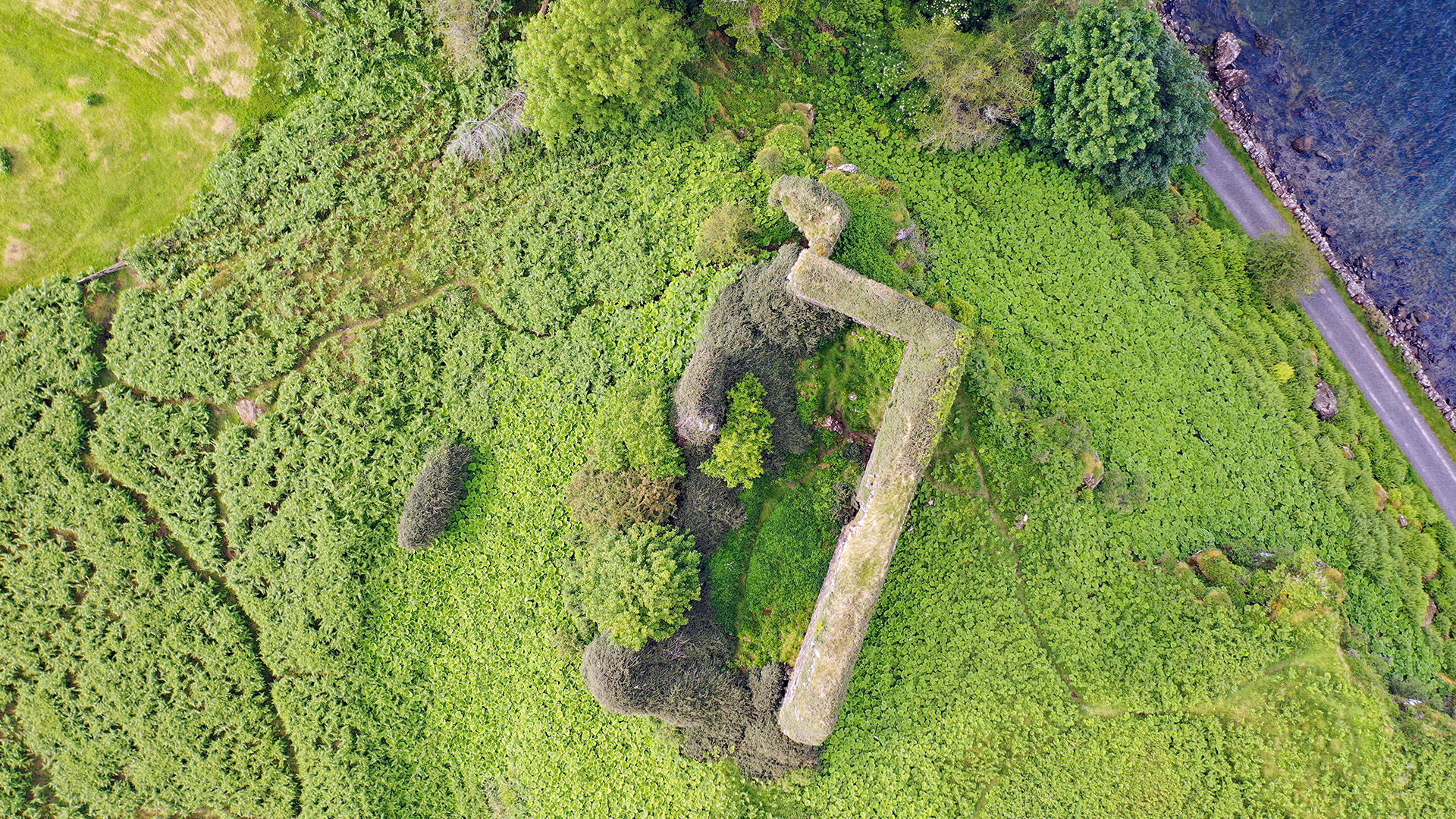
PaulT (Gunther Tschuch), CC BY-SA 4.0, via Wikimedia Commons
A Change of Hands
The MacDougalls’ dominion over Aros Castle ended in the early 14th century. This happened after the Scottish Wars of Independence. During the conflict, the clan had sided with Edward I of England against Robert the Bruce. As a consequence, their lands, including Aros Castle, were forfeited. In a move that redefined the region’s political landscape, the king granted the castle to Angus Og of Islay. He was the influential Lord of the Isles and head of the formidable Clan Donald.
The Era of Clan Donald
The transfer of ownership marked the beginning of Aros Castle’s most significant period. The Lords of the Isles used the castle as an occasional but important base throughout the late 14th and 15th centuries. Its importance was not just military; it was also a center of administration and political power. The Lords issued charters from the castle in 1410, 1469, and 1492, demonstrating its role in legitimizing their authority. This era, however, saw persistent conflict between the Lords of the Isles and the Scottish Crown, particularly over the Macdonalds’ claim to the earldom of Ross. This long-standing tension eventually led to open warfare and the imprisonment of Alexander of Islay.
The Clan Donald’s era of dominance ended in 1493 with the murder of John’s heir, Angus. This directly led to the forfeiture of their vast lands, including Aros Castle. The castle’s history, therefore, became a microcosm of the larger power struggles between the centralized monarchy and the semi-independent Highland clans.
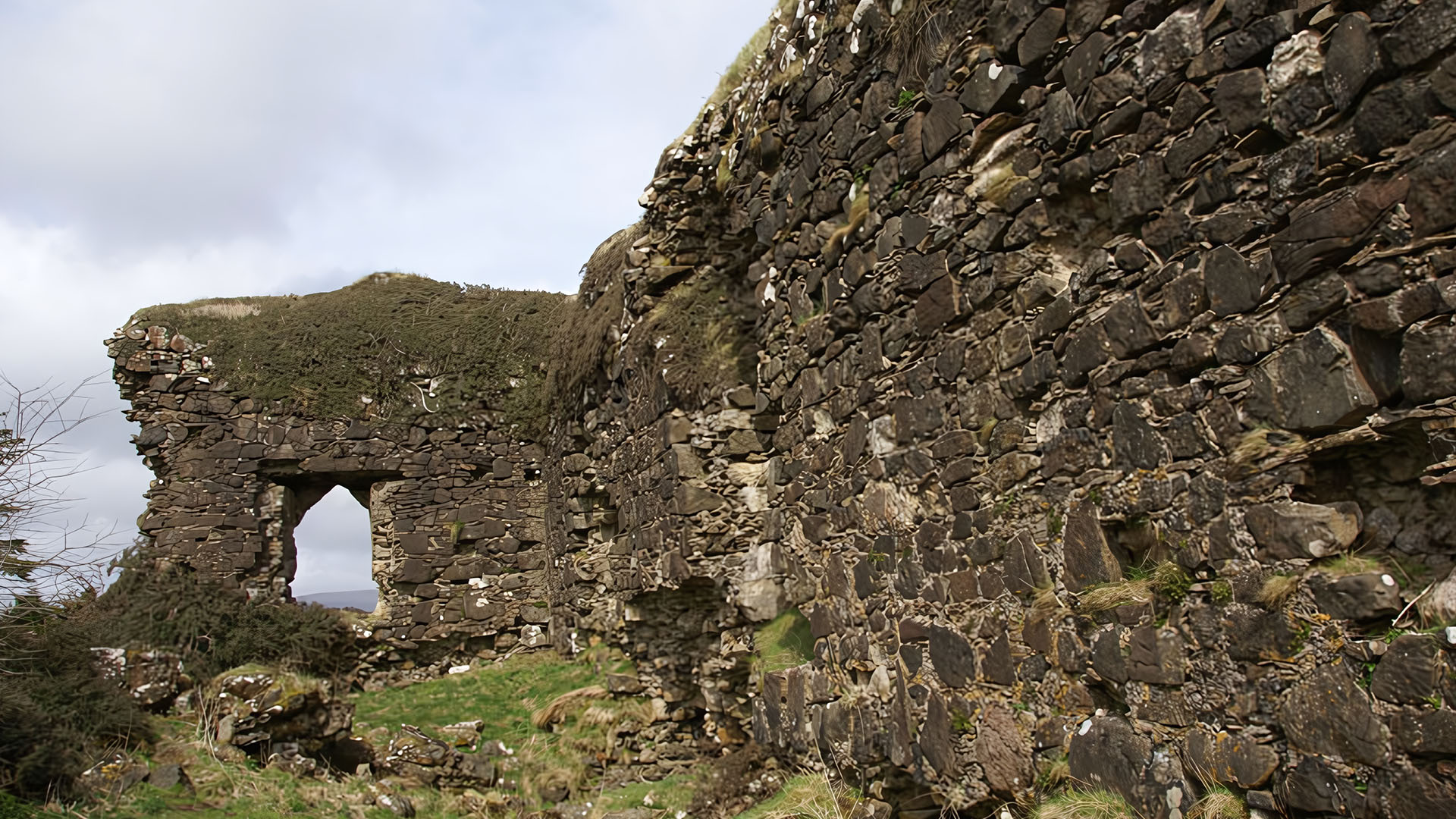
Otter, CC BY-SA 3.0, via Wikimedia Commons
Decline and Preservation
After the fall of the Lords of the Isles, Aros Castle passed to the Macleans and then to the Campbells. By the late 17th century, its days as a powerful stronghold were over. Its subsequent use as a quarry hastened its physical decline, with its stones repurposed for other buildings.
Despite its dilapidated state, Aros Castle holds profound historical significance. In 1991, the government formally designated it a scheduled monument, giving it the reference number SM5064. This legal protection covers the 13th-century hall-house, the bailey, and a small stone-built galley landing. It acknowledges the castle’s national importance and mandates its preservation. This designation highlights a fascinating paradox: the castle’s military strength may have long since vanished, but its value as an irreplaceable historical document has endured for centuries.
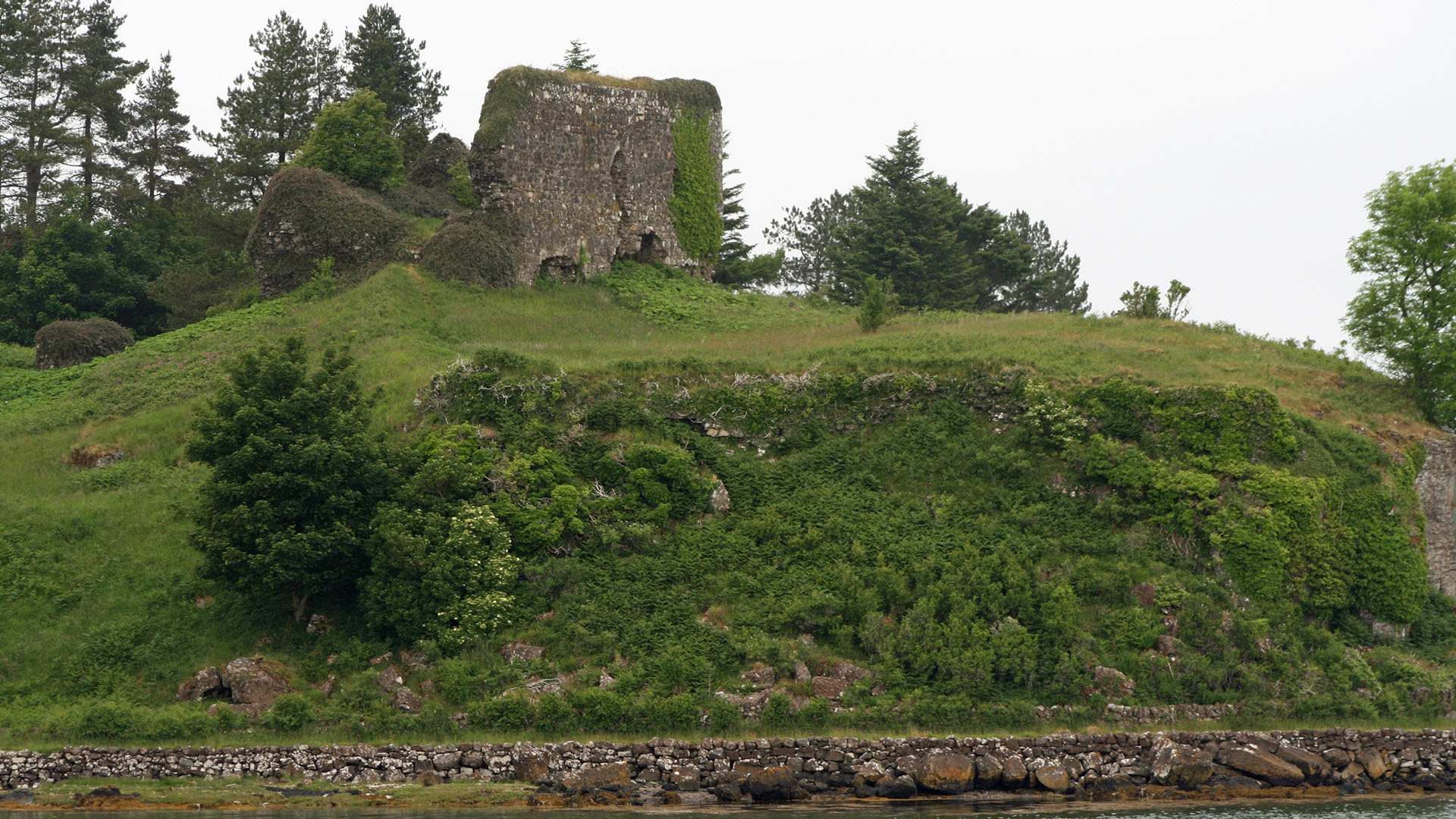
Aros Castle by Jo and Steve Turner, CC BY-SA 2.0, via Wikimedia Commons
Visiting the Ruins Today
For visitors, the ruins of Aros Castle offer a glimpse into its dramatic history. The Scottish Outdoor Access Code permits public access. This allows you to explore the site and its surroundings. You can follow in the footsteps of the MacDougalls, the Macdonalds, and the other clans who shaped Mull’s destiny. While exploring, remember to distinguish the historic castle from the nearby Aros Park, which offers its own distinct recreational amenities. Recent archaeological investigations have uncovered new insights into the castle’s construction, revealing the diverse techniques and materials its medieval builders used. The ruins of Aros Castle are not merely crumbling stones; they are a monument to a forgotten era, an echo of past power struggles, and a testament to the enduring power of history in the Scottish landscape.
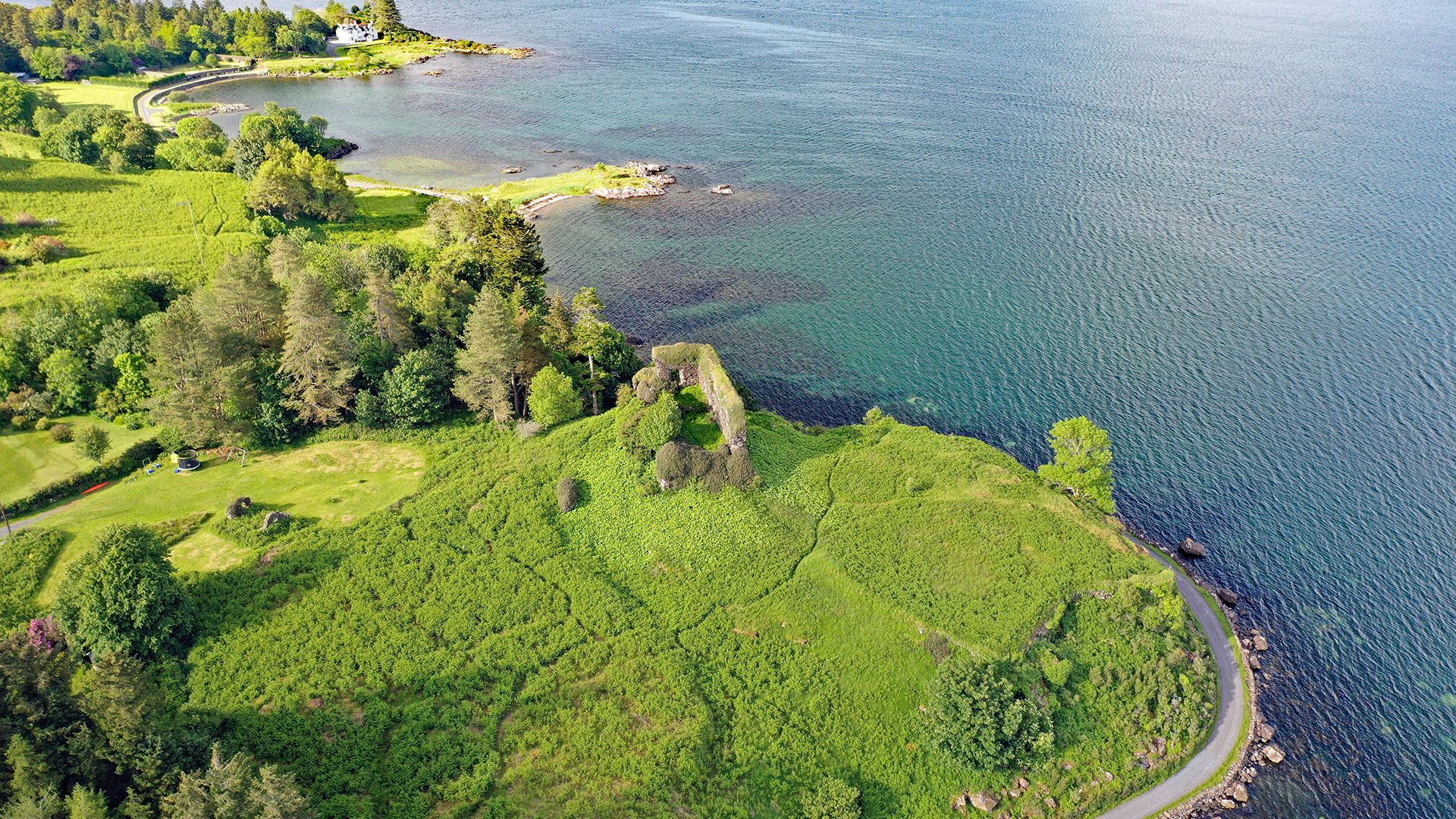
PaulT (Gunther Tschuch), CC BY-SA 4.0, via Wikimedia Commons
